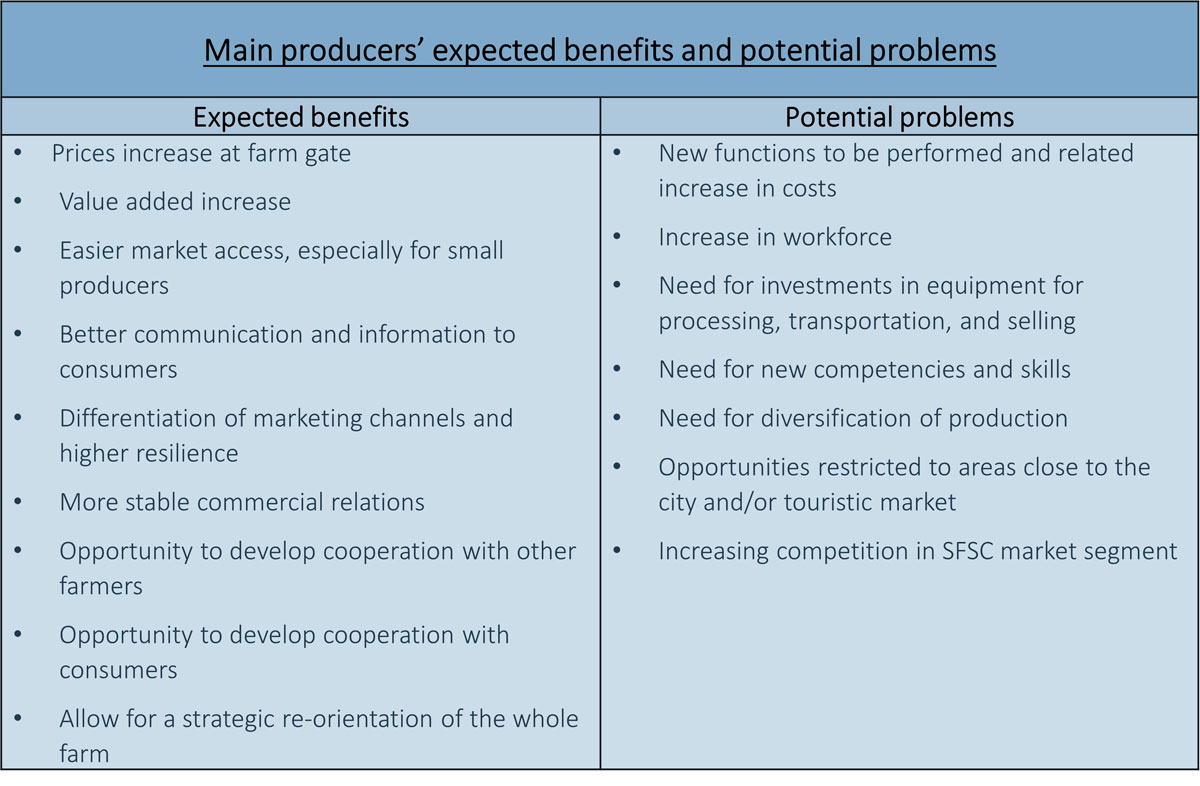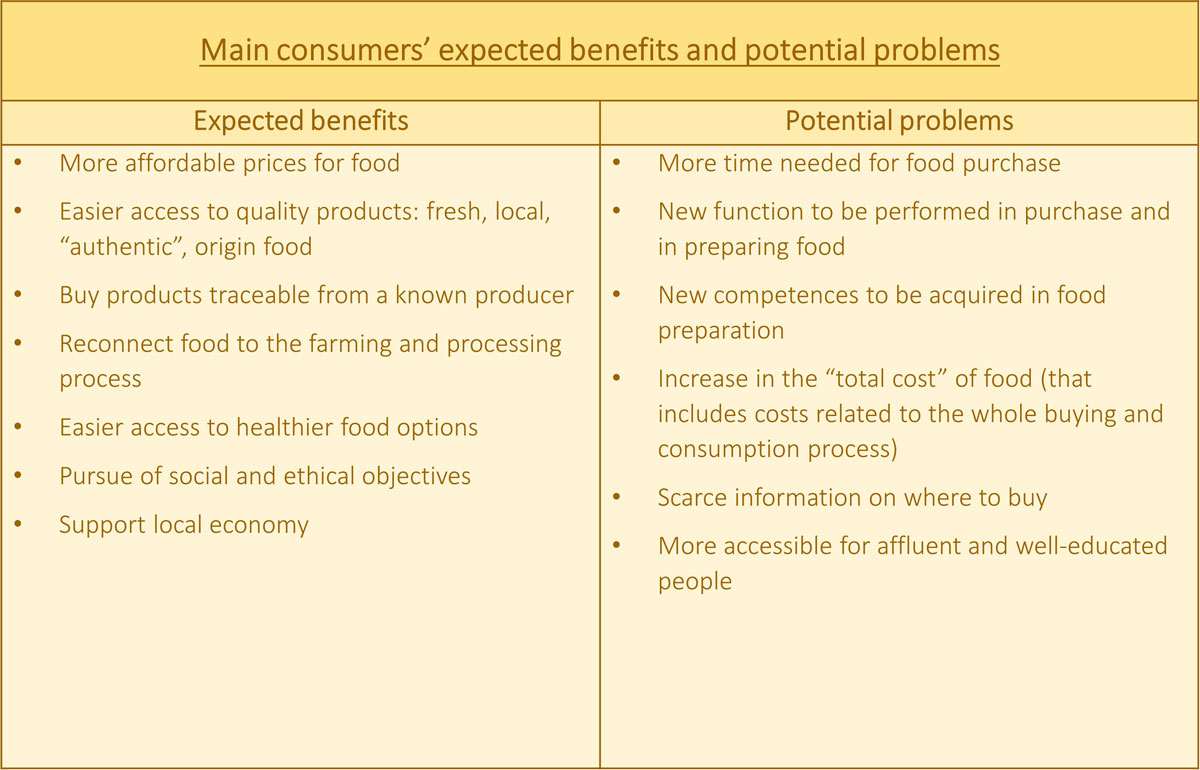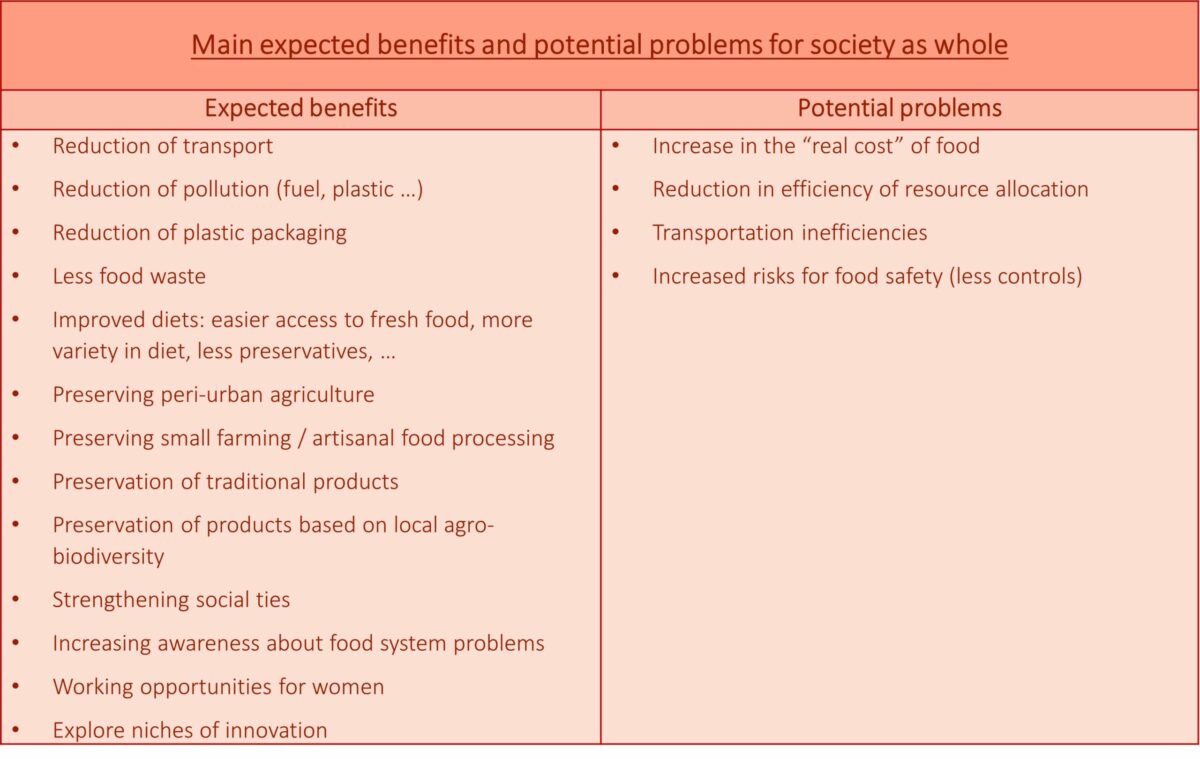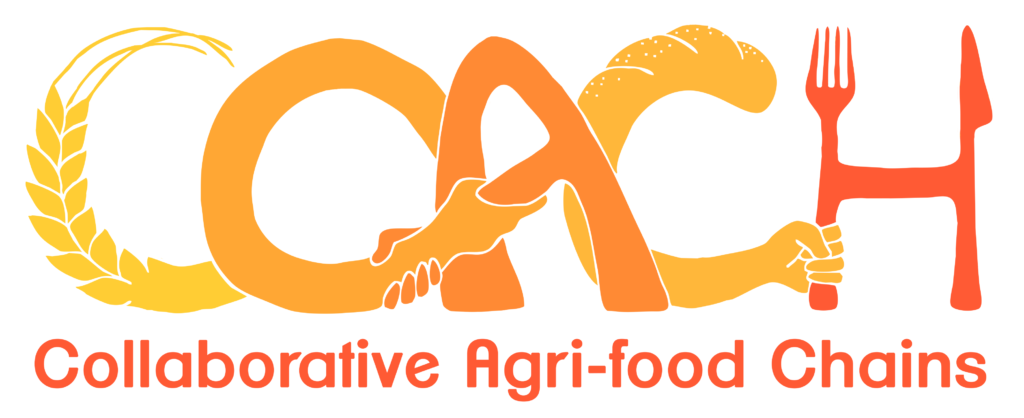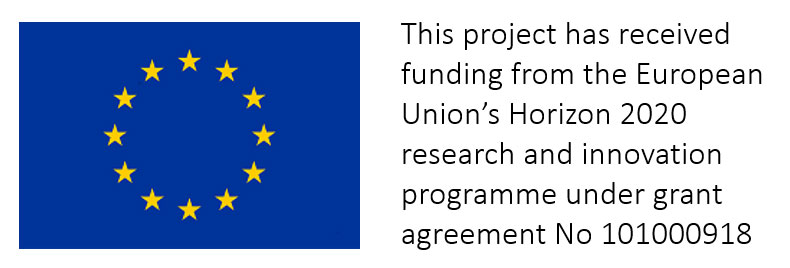Why assess Costs & Benefits from SFSCs’ initiatives?
Why assess costs & benefits?
SFSCs are often said to generate significant positive impacts on the economy, the society and the environment. However, SFSCs often bring about new costs for producers, especially small and medium size ones, which can threaten their economic viability.
Indeed, when selling though SFSCs, producers, especially farmers, can incur into additional costs that in conventional supply chains are normally born by other external economic subjects, which take care of the downward phases of the supply-chain. Bypassing intermediaries implies the re- internalisation of functions and activities (such as selection, packaging, transportation, advertising, selling), which brings about additional costs of labour, new investments, acquisition of knowledge and skills.
Acquiring awareness and understanding of the costs and benefits that selling though SFSCs can generate, and being able to assess the impacts of the different marketing options available, is essential for producers to take production and marketing decisions.

Who should assess costs and benefits?
Assessing costs and benefits is a useful exercise for all producers engaged in SFSC initiatives.
Individual producers should assess their costs and revenues to better understand the profitability of SFSCs in comparison with other marketing channels. Moreover, this exercise can help to point out issues and inefficiencies in the production and distribution process, and implement changes to improve performances.
Assessing and investigating costs and benefits of a given marketing option can be very useful also for managers of SFSCs initiatives, such for instance the coordinator of a farmers’ market or a farmers’ cooperative shop, in order to activate collective reflection among the members of the initiative, share experiences and knowledge, gain collective awareness of the potential impacts of different marketing choices, and lead to a more conscious individual and collective decision- making, identifying corrective actions.
Carrying out a costs and benefits assessment can be quite a complex task. However, while quantitative impacts measurements often require the support of an external expert to guide producers in reconstructing or estimating their economic costs and revenues, qualitative assessments based on actors’ perceptions can be an easier way for producers to self-assess their performance and the impacts of a given marketing solution.
But costs and benefits do not concern only the economic dimension. If economic viability is one of the three pillars of sustainability, and a critical aspect in order to pursue other non-economic objectives, SFSCs are generally said to exert significant positive impacts also on social and environmental dimensions.
While quantifying social and environmental impacts can be even harder than quantifying economic ones, qualitative assessment methodologies can offer a great help to capture these non-economic effects, too.
Main typologies of costs & benefits
The impacts of SFSCs can be observed in the economic, social and environmental dimensions of sustainability, and can affect producers, consumers and the society as a whole.
In terms of economic benefits, SFSCs can enable producers to get higher prices, increase their access to markets and bargaining power, achieve higher resilience and stability, and reduce marketing risks.
In the social sphere, SFSCs can favour the interaction between farmers and consumers, the cooperation between producers, the development of trust, social capital, and sense of community, the vitality and quality of life of rural areas, and increase consumers’ awareness about the provenience of food, food habits, and healthy diets.
On the environmental side, SFSCs can enable more sustainable production, processing, and transportation methods, lead to packaging reduction, lower food waste, and contribute to the preservation of agrobiodiversity, natural resources, and landscape.
However, SFSCs can generate also costs or negative impacts on the three dimensions of sustainability.
The figures report the most cited expected benefits and costs/problems in literature, on producers, consumers and society.
